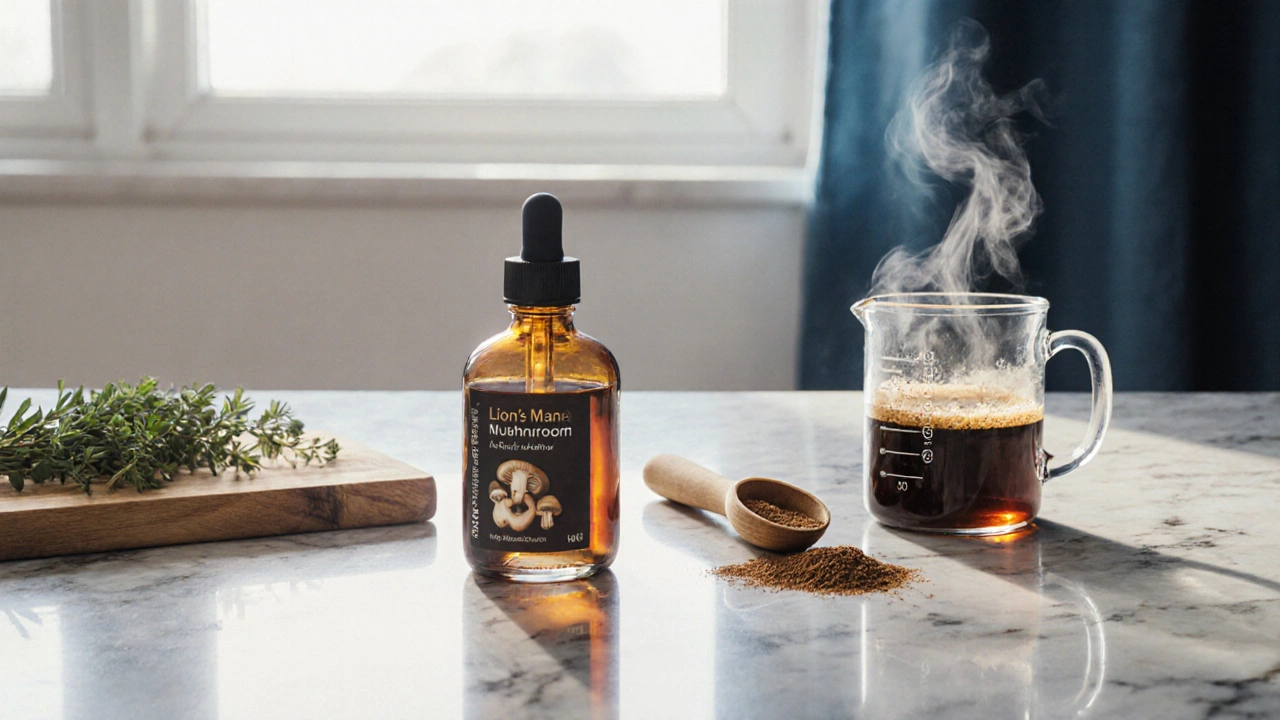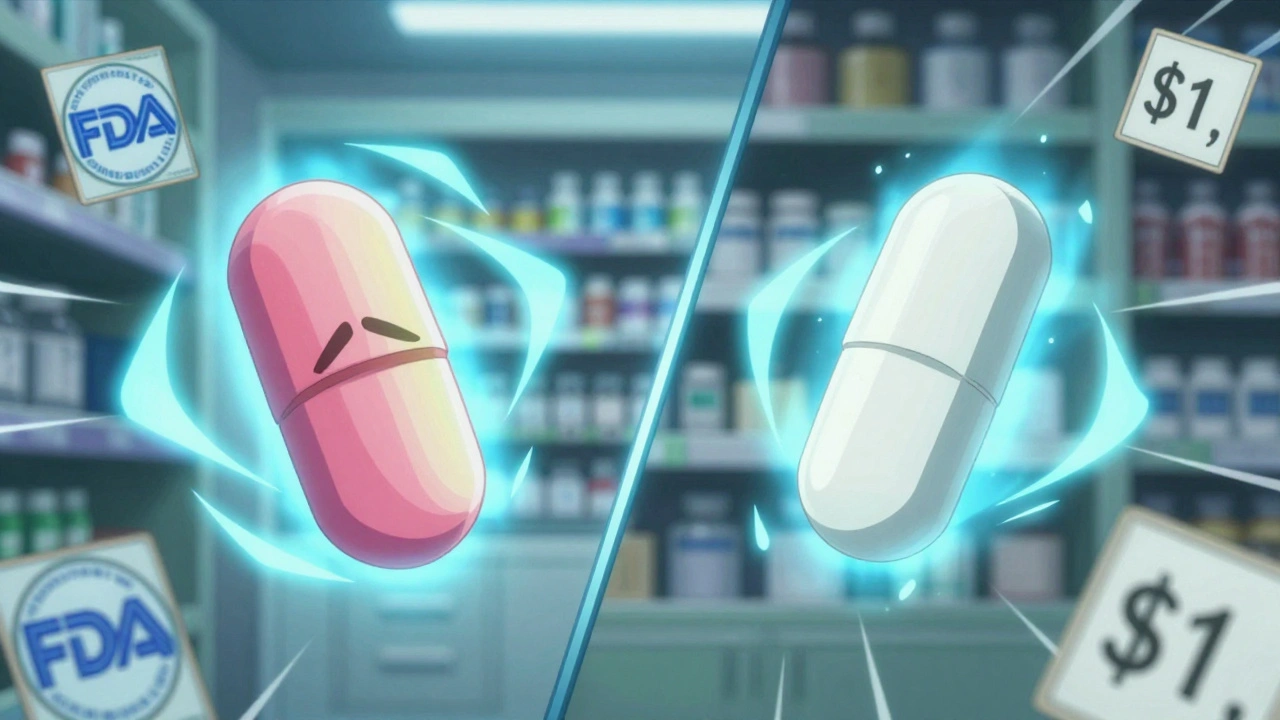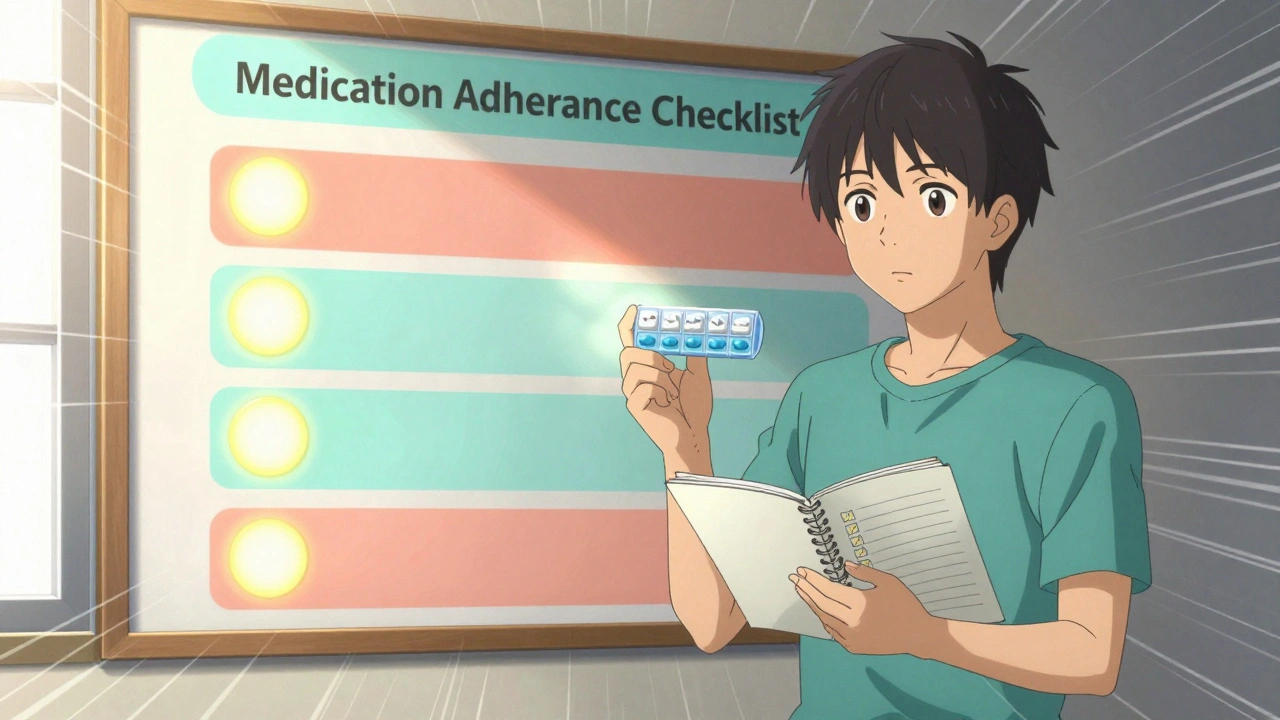The History of Medicinal Fungi in Traditional Medicine

Ever wonder why today’s health stores are stacked with mushroom capsules and tinctures? The answer lies in a centuries‑old relationship between humans and medicinal fungi fungi that have been used for healing, energy, and longevity long before modern labs existed. This article walks you through the journey from ancient rituals to today’s wellness aisles, so you can see exactly how those spore‑filled powerhouses earned their spot in modern supplement cabinets.
Ancient Roots: Early Healing Practices
In the misty highlands of China, the first recorded use of fungi appears in the Shennong Bencao Jing, a 1st‑century‑BC materia medica. The text lists Reishi Ganoderma lucidum as the “mushroom of immortality,” prized for its calming effect on the mind and its supposed ability to prolong life.
Meanwhile, on the Indian subcontinent, Ayurveda incorporated Cordyceps Cordyceps sinensis into tonics for warriors, believing the fungus could boost stamina and respiratory function. Ancient Ayurvedic practitioners called it “the sun‑ray fungus” because it grew on the high‑altitude grasslands that soak up the strongest sunlight.
Across the Atlantic, Native American tribes such as the Ojibwe and Iroquois used Chaga Inonotus obliquus as a brew to treat digestive woes and joint pain. Their oral histories describe gathering the black, burnt‑looking conk from birch trees in the early spring, then simmering it for days to extract its “life‑force.”
Key Medicinal Fungi and Their Legends
- Reishi - known as the “elixir of life” in Chinese medicine; used to calm the nervous system and support heart health.
- Chaga - called the “king of mushrooms” in Siberian folk medicine; revered for its antioxidant‑rich tea.
- Cordyceps - a parasitic fungus that infects caterpillars; prized in Tibetan and Ayurvedic texts for boosting VO2 max and sexual vitality.
- Shiitake Lentinula edodes - a staple in Japanese Kampo; its lignin‑rich extracts were believed to lower cholesterol.
- Lion’s Mane Hericium erinaceus - celebrated in Korean folk medicine for sharpening memory and nerve regeneration.
How Knowledge Traveled the World
Silk Road caravans didn’t just carry silk and spices; they also moved dried mushroom slices. Chinese merchants introduced Reishi to the Korean peninsula, where it merged with local shamanic practices. In the 16th century, Spanish explorers returned from the Philippines with dried shiitake, sparking curiosity among European botanists.
When colonial powers mapped the Americas, they documented Indigenous uses of Chaga and other wild fungi in journals that later fed into Western pharmacopoeias. By the late 1800s, European mycologists began classifying these organisms, laying the taxonomic groundwork for modern research.

From Folklore to Labs: Scientific Validation
Fast forward to the 20th century: researchers isolated beta‑glucans, polysaccharides found in the cell walls of many medicinal fungi. Studies showed beta‑glucans can modulate immune response, supporting the ancient claim that these mushrooms boost “inner fire.”
Modern trials on Reishi reported reduced inflammatory markers in stressed adults, while Chaga’s high melanin content demonstrated potent antioxidant activity comparable to vitamin C. Cordyceps extracts have been linked to a 15% rise in aerobic capacity among elite cyclists, echoing the centuries‑old belief in stamina enhancement.
Why the Contemporary Wellness Boom?
Today, you can find mushroom powders in coffee blends, gummies, and even skin‑care creams. The surge is driven by three factors:
- Consumer demand for natural immunity boosters after the COVID‑19 pandemic.
- Legitimate research confirming that compounds like antioxidants and beta‑glucans have measurable health effects.
- Convenient extraction technologies (hot water, ethanol, dual‑phase) that preserve active molecules while making dosing easy.
Integrative clinics now prescribe mushroom tinctures alongside conventional treatments, noting fewer side‑effects and improved quality of life for patients undergoing chemotherapy.

Safety, Pitfalls, and How to Choose Wisely
Not all fungi are friendly. Mistaking a poisonous Amanita for a medicinal species can be fatal. Always source from reputable manufacturers who provide third‑party testing reports.
Potential side‑effects include mild digestive upset or allergic reactions, especially for those on immunosuppressants. Start with a low dose, track how you feel, and consult a healthcare professional before combining with prescription meds.
Quick Comparison of Popular Medicinal Fungi
| Fungus | Primary Active Compounds | Traditional Use | Modern Evidence | Typical Form |
|---|---|---|---|---|
| Reishi | Triterpenoids, beta‑glucans | Calm the mind, support longevity | Reduces CRP, improves sleep quality | Tea, powder, extract |
| Chaga | Melanin, superoxide dismutase | Anti‑inflammatory tea | Strong antioxidant capacity in vitro | Powder, tincture |
| Cordyceps | Cordycepin, polysaccharides | Boost stamina, respiratory health | 15% VO2 max increase in athletes | Capsule, liquid extract |
| Shiitake | Lentinan, eritadenine | Lower cholesterol, support immunity | Lentinan approved as adjunct cancer therapy in Japan | Dry slices, powder |
| Lion’s Mane | Hericenones, erinacines | Enhance cognition, nerve repair | Improved MMSE scores in mild cognitive decline | Powder, gummy |
Frequently Asked Questions
Which medicinal fungus is best for immune support?
Reishi and Shiitake both contain high levels of beta‑glucans, which are proven to enhance innate immunity. Reishi is often favored for its calming effect, while Shiitake offers additional cholesterol‑lowering benefits.
Can I combine mushroom supplements with prescription medication?
Generally it’s safe, but some fungi (especially Reishi) can interact with blood‑thinners or immunosuppressants. Talk to your doctor, start with a low dose, and monitor any changes.
How do I know a mushroom product is high quality?
Look for third‑party lab reports, clear species identification, and extraction methods that preserve both water‑soluble (beta‑glucans) and alcohol‑soluble (triterpenoids) compounds.
Is there a risk of allergic reaction?
Allergies are rare but can happen, especially for people with mushroom or mold sensitivities. A patch test or tiny trial dose can help gauge tolerance.
What’s the difference between a tincture and a powder?
Tinctures use alcohol or glycerin to pull out both water‑ and fat‑soluble compounds, delivering a fast‑acting dose. Powders are usually hot‑water extracts, emphasizing beta‑glucans and are great for mixing into foods or drinks.






Comments
anshu vijaywergiya
October 12, 2025 AT 13:10From the misty hills of ancient China to the birch‑covered forests of Siberia, medicinal fungi have woven a shared story of survival and hope.
They were not merely food, but carriers of cultural memory, whispered in rituals and shared around campfires.
Today we see those same spores popping up in sleek supplement bottles, a testament to humanity’s timeless curiosity.
Their legacy reminds us that healing often begins long before a lab notebook is opened.
Let’s honor that lineage by learning from every tradition, not just the loudest voice.
ADam Hargrave
October 12, 2025 AT 15:40Sure, the West finally figured out that a mushroom can do more than garnish pizza 🍄.
After years of ignoring ancient wisdom, now we’re all scrambling to bottle “nature’s miracle” and slap a patriotic label on it.
It’s almost adorable how quickly the market jumps on anything that sounds exotic and sells like hotcakes.
Rohit Poroli
October 12, 2025 AT 18:10Beta‑glucans, the polysaccharide fibres lining mushroom cell walls, have been isolated since the 1960s and remain a cornerstone of immunomodulatory research. Early Chinese pharmacopeias already noted that Reishi could dampen fever, a hint at its immune‑balancing potential. Modern double‑blind trials on Reishi extracts demonstrate a statistically significant reduction in C‑reactive protein among chronically stressed participants. Similarly, Chaga’s melanin‑rich matrix has shown in vitro antioxidant capacity that rivals synthetic Vitamin C under oxidative stress assays. Researchers measuring VO₂ max in cyclists found that a standardized Cordyceps supplement boosted aerobic performance by roughly fifteen percent after a six‑week regimen. Lion’s Mane studies report up‑regulation of nerve growth factor, correlating with modest improvements in delayed‑recall tasks for age‑related cognitive decline. Shiitake’s lentinan has earned regulatory approval in Japan as an adjunct to chemotherapy, reinforcing the link between traditional use and clinical validation. The pharmacokinetics of triterpenoids from Reishi reveal an ability to cross the blood‑brain barrier, suggesting possible neuroprotective effects beyond anecdote. Importantly, safety profiles across these species show low incidence of adverse events when dosed within established therapeutic windows. However, misidentification of toxic Amanita species remains a real hazard, underscoring the need for rigorous species verification. Third‑party testing labs now provide chromatographic fingerprints that confirm the presence of active markers like cordycepin and ergosterol. Patients on immunosuppressants should monitor lymphocyte counts, as beta‑glucan stimulation can subtly shift immune equilibrium. Dosage titration-starting with a quarter of the labeled amount and gradually increasing-helps mitigate mild gastrointestinal upset reported by some users. Integrative clinicians increasingly pair mushroom tinctures with standard oncology protocols, observing reduced chemotherapy‑related fatigue in pilot cohorts. Overall, the convergence of ethnobotanical tradition and contemporary biochemistry paints a compelling picture of medicinal fungi as adjunctive therapeutics rather than miracle cures.
Jessica Tang
October 12, 2025 AT 20:23When choosing a mushroom product, pay attention to the extraction method: hot‑water extracts preserve beta‑glucans, while alcohol‑based tinctures pull out triterpenoids.
Look for a dual‑phase process if you want a broader spectrum of actives.
Third‑party certificates are the quickest way to verify quality.
Matt Quirie
October 12, 2025 AT 22:20It is advisable, therefore, to consult a qualified healthcare professional, especially if you are currently taking anticoagulant medication; the interaction potential of Reishi with blood‑thinners has been documented, albeit rarely; moreover, many manufacturers neglect to disclose the exact concentration of active compounds, which can lead to inadvertent overdosing; consequently, vigilant label scrutiny becomes indispensable.
Pat Davis
October 13, 2025 AT 00:00The trans‑Silk Road journey of these fungi illustrates how cultural exchange enriches medical knowledge across continents.
From Chinese monasteries to Korean shamanic circles, each adaptation respected the original intent while adding local nuance.
Such collaborative heritage underscores the responsibility of modern producers to honor source traditions with transparency and respect.
Mary Wrobel
October 13, 2025 AT 01:23Imagine stirring a steaming mug of Chaga tea on a cold winter night, the dark broth swirling like a midnight sky, and feeling a gentle warmth bloom from the inside out.
That vivid sensory memory is what draws many of us to these ancient fungi, beyond just the hype of “immune boosting.”
It’s a reminder that the best supplements often carry a story we can taste.
Lauren Ulm
October 13, 2025 AT 02:30What most don’t tell you is that the sudden mushroom boom aligns perfectly with a hidden agenda to keep the population dependent on patented “natural” solutions 😶🌫️.
Big pharma fields these fungi under the guise of wellness, while quietly steering research funding away from genuine, low‑cost alternatives.
Stay vigilant, question the source, and don’t let glossy packaging distract you from the bigger picture.
Michael Mendelson
October 13, 2025 AT 03:20Honestly, the whole mushroom craze feels like a watered‑down version of ancient alchemy, repackaged for the Instagram generation.
People act like they’ve discovered the secret of life, yet the science is still catching up.
It’s cute, but don’t let the hype replace real medical advice.
Patricia Fallbeck
October 13, 2025 AT 04:10Really? It’s fascinating how some folks cling to “miracle” narratives while ignoring the nuanced data, as if a single mushroom could rewrite human physiology 🤔.
Let’s keep the conversation grounded: benefits exist, but they’re modest, and only when integrated responsibly into a balanced lifestyle.
Brett Snyder
October 13, 2025 AT 05:00Only true patriots will recognize that our ancestors relied on these natural power‑houses long before any foreign imports tried to hijack our health market.
It’s time we reclaim that heritage and support homegrown mushroom initiatives.
Nidhi Jaiswal
October 13, 2025 AT 05:50Look, the data is clear enough – you either use a reputable brand or you waste your money on junk.
Sunil Sharma
October 13, 2025 AT 06:40When you share a mushroom supplement with a friend, remind them to check the label for both beta‑glucans and triterpenoids – that combo is where the magic happens.
And if you’re ever unsure, a quick chat with a knowledgeable vendor can save a lot of guesswork.
Leah Robinson
October 13, 2025 AT 07:30Hey team, keep experimenting with different mushroom powders in your smoothies – you’ll find the taste you love while still reaping the benefits! 🌱
Just stay consistent, and the tiny improvements will add up over time.
Abhimanyu Lala
October 13, 2025 AT 08:20Mushrooms aren’t a cure‑all.
Richard Sucgang
October 13, 2025 AT 09:10Technically, the sentence above lacks a period, and ‘cure‑all’ should be hyphenated as shown – proper punctuation matters even in brief statements.